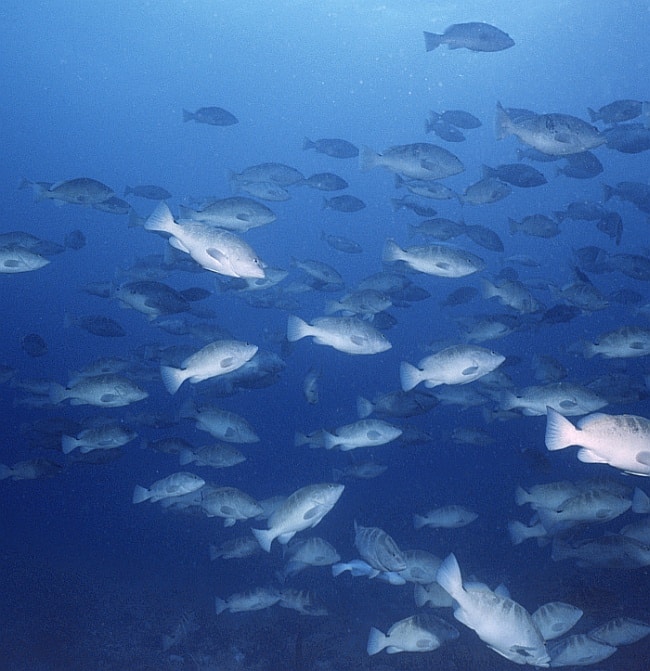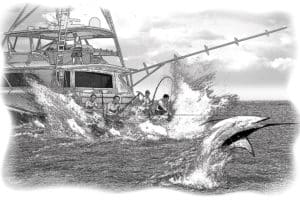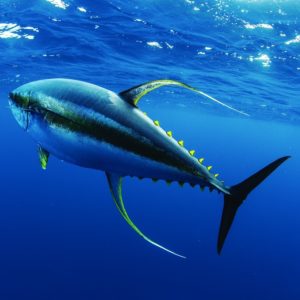Anglers tend to think of groupers as homebodies — spending their lives in some specific wrecks or reefs they call home. That’s often a fairly accurate portrayal. But what many anglers probably don’t realize is that most species of grouper are known to migrate long distances to spawn.
Both gag grouper (Mycteroperca microlepis) and Nassau grouper (Epinephelus striatus) are known to migrate hundreds of miles. Goliath grouper (E. itajara) have been shown to migrate as far as 95 miles to a spawning site.
What’s more, beyond such surprising distances, are the masses of migrating grouper forming spawning aggregations that can number in the thousands, though the number involved in aggregations varies by species.
For example, Goliath grouper form relatively small spawning groups consisting of 10 to 100 individuals, while tens of thousands of Nassau grouper might be present in a single aggregation. Of all groupers, only the red (E. morio) is known to spawn without forming aggregations.
The locations where spawning aggregations occur can be quite consistent from year to year. Some 60 to 80 spawning-aggregation sites have been identified for Nassau grouper, and a given site might be used repeatedly for at least 50 years.
The times at which migrations and spawning aggregations occur are quite predictable. For example, Nassau grouper aggregate during November and December, and peak spawning occurs two days after the full moon during this period. Gag grouper have longer spawning seasons than Nassaus; members of this species normally aggregate and spawn from January through April. Red hind (E. guttatus) form spawning aggregations in the U.S. Virgin Islands around the winter solstice (the shortest day of the year, between December 20th and 23rd), and peak spawning occurs 20 to 40 days following the solstice.
Although spawning aggregations help ensure the reproductive success of groupers, they can also leave groupers vulnerable to overexploitation by fishing. For example, the Nassau grouper was once quite common throughout much of its range; it was classified as endangered by the International Union for Conservation of Nature in 2003. At that time, the IUCN estimated that the number of Nassau grouper had declined by 60 percent over the past 27 to 30 years. The population of Nassau grouper along the East Coast of the United States is now so low that this species cannot lawfully be harvested by any means.
Dr. Ray Waldner is a professor of fisheries biology at Florida’s Palm Beach Atlantic University. He’s also a longstanding Sport Fishing Fish Facts expert.








